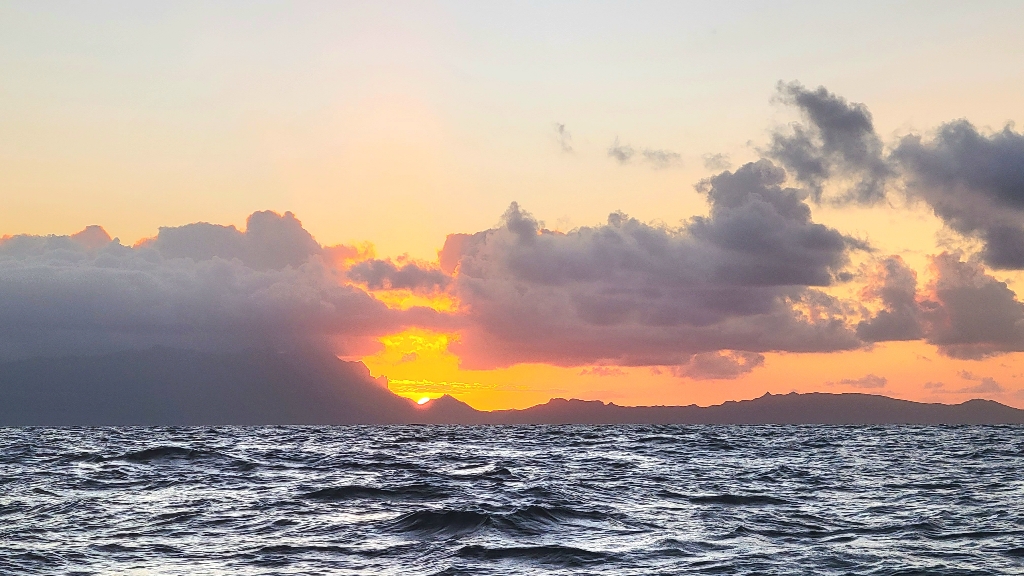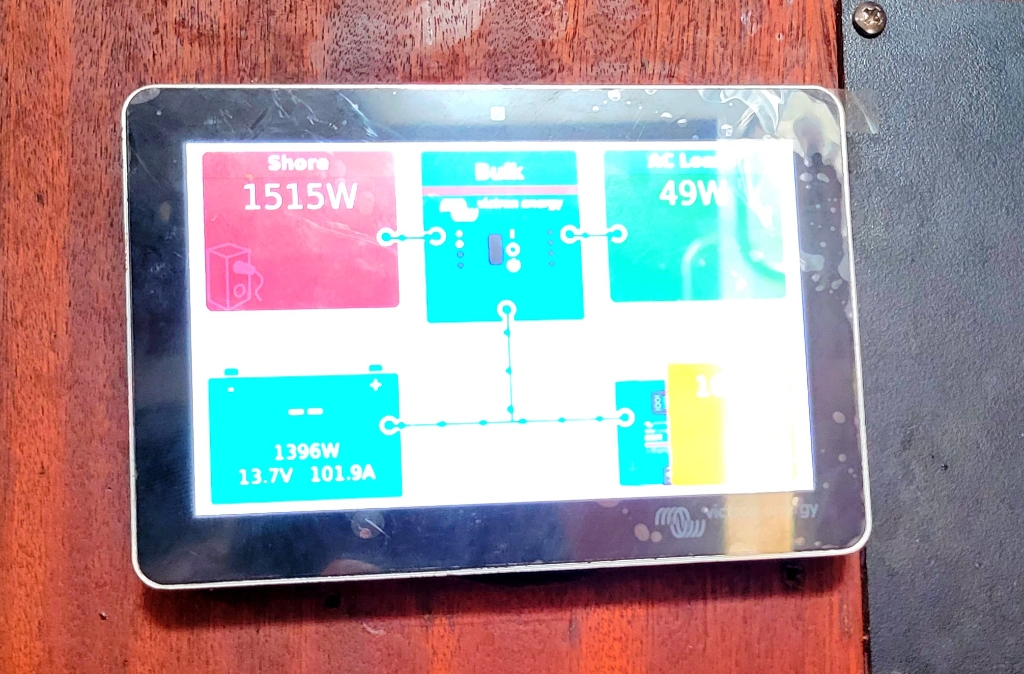After taking a few weeks to catch up with the world and clean and fix up ourselves and the boat, we’re reflecting more on our voyage across the Pacific. We learned some lessons from our longest passage, and know what we will do – and not do – again.

Convenience is Key
Cockpit Snacks
Some days, going down below to scrounge up a meal was beyond my capacity. Having a handy cache of nuts, granola bars, crackers, and ginger snaps made life easier on those rough days. We put them in the storage compartment of our cockpit table, where we usually keep sunscreens, and it was very handy.
French Press
Our Aeropress could not cut it in those rolly seas! Fortunately, Brian had the foresight to buy a stainless French press which became part of our morning coffee ritual. We still had to set it in the sink and pour carefully, but it was the best method of safely getting our much-needed morning joe.
No Shoes
One of my favorite things about passages is not wearing shoes! The downside? Since returning to daily shore visits, I’ve sprouted a few blisters, even wearing my trusty Keens.
In addition to no shoes, we were very casual on Sava’s long passage. I thought I’d be in bathing suits the whole time but it was too cold! Instead I wore pajamas plus hoodies, especially after dark. Surprisingly, we still had a full laundry bag when we arrived, but that also included dish towels and bed linens.
Continue reading “Lessons From our Longest Passage”






